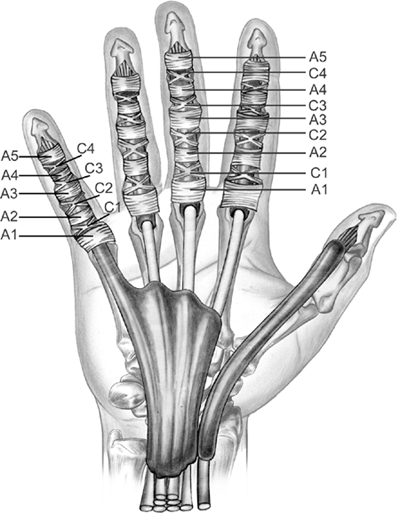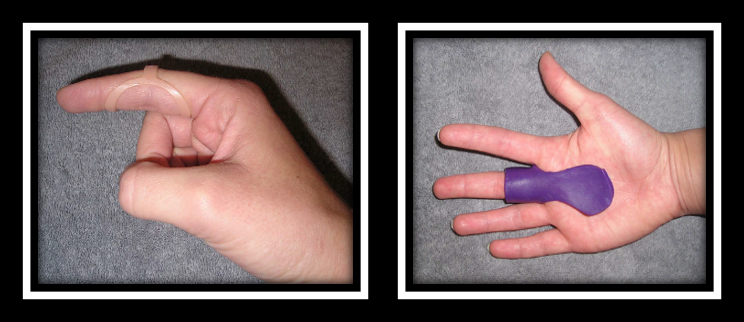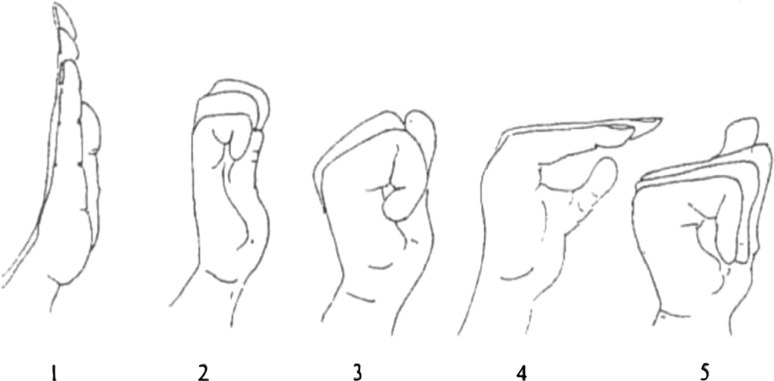Have you been experiencing a catching or locking sensation in your hand? Have you noticed a bump or swelling around your hand or finger? If so, you may be dealing with trigger finger. Sometimes called trigger thumb, trigger finger is a condition in which the long flexor tendon of the finger becomes tight from being overused. We’re going to break down exactly what this condition is, why it can happen, and take a look at trigger finger treatment.
What is Trigger Finger?
Sometimes called trigger thumb, trigger finger is a condition in which the long flexor tendon of the finger becomes tight from being overused. It can feel like your finger gets stuck as you try to bend it, or vise versa, as you try to straighten it. Trigger finger is a condition that occurs with irritation of one or more of the annular ligaments (a strong band of fibers), as well as the tendon and tendon sheath. This most commonly occurs around the knuckles ( or ‘A1 pulley’) of the first or fourth finger (thumb and ring finger, respectively). This irritation leads to inflammation and narrowing of the pulley system, which can make it hard for the tendon to pass through. When inflammation and irritation get more severe, it causes the tendon to catch and lock in the annular pulley as it’s trying to glide back and forth. This often presents as finger locking or catching in either a bent or straight position. Initially, you may be able to force the finger to unlock, but when the condition gets more severe, you may need to use your other hand to unlock the finger. It’s also common to see some swelling or a small bump develop around the base of the affected finger. This bump is created by inflammation of the tendon/pulley system, as well as scar tissue being laid on top of the area as it tries to heal.
Here is the anatomical description of the above image if you’re interested:
In the image above, we can see the flexor tendons on the palmar side of our hand that travel from our wrist to the end of our fingers. When these tendons contract, they flex our fingers and curl them in, such as when making a fist. At the palm of the hand below we can also see the tendon sheaths that surround the flexor tendons. The sheaths have been cut away in part of the image to reveal the tendons themselves, but they would extend all the way to the end of the tendons, as pictured with the thumb. In addition to the flexor tendons and the tendon sheaths, we can also see the ligaments that surround the tendons. These ligaments are labelled as A1-5 for annular ligaments and C1-4 for cruciform ligaments.The terms annular and cruciform are simply used to describe the shape of the ligament. Cruciform ligaments form an X shape, while annular ligaments wrap straight across in a circular shape. Although not pictured below, our thumb also has 2 annular ligaments and one oblique ligament. These ligaments provide important constraints to the tendons to prevent them from lifting off of the bone when they contract and move. Without these ligaments, everytime we bend our fingers we would see the tendons lifting off of our fingers creating a bowstringing appearance. Thus, the ligaments create a sort of pulley system, which allows the smooth gliding of tendons back and forth as we move our hands and fingers.
Trigger Finger Treatment
If what you have read so far sounds familiar to you, we want to start treating this as soon as possible. Conservative treatment (non-surgical) is usually the first intervention for this condition.
We want to start with bracing the injured finger. While this may impact day-to-day activities, it’s crucial that we immobilize the affected tendon and allow it time to rest and heal. In order to limit the impact bracing may have on your typical activities, a single finger brace is usually recommended.
In the picture below, we can see two different options for single finger bracing. In the image on the right, the brace covers the joint at the base of the finger. In contrast, the image on the left shows a brace that immobilizes the joint in the middle of the finger.
Research indicates that both braces are effective, with greater improvement seen in those who use the brace on the left. Individuals often wear this brace for longer, possibly due to increased comfort, which may be why it shows better results.
Along with resting and immobilizing the affected finger, we should also work on exercising it, so that it doesn’t get stiff and weak. Tendon gliding exercises are a series of movements that can help keep the tendons moving and healthy. The image below demonstrates a few different options for tendon gliding. It’s important to perform these exercises within your comfort level, and not to push into any painful movements. It’s also valuable to avoid the movements that recreate the locking or catching sensation. Heat can be a helpful adjunct to sooth the pain and stiffness around the affected finger as well. It’s often beneficial to heat the affected hand/finger prior to performing the tendon gliding exercises.
If bracing, heat, and exercises do not provide you with significant symptom relief, your doctor may recommend a corticosteroid injection. This type of injection is an anti-inflammatory to help settle the inflammation and irritation occurring at and around the tendon. A doctor will need to do this injection, and it will usually be right at the site of the injured tendon/pulley. It can be sore for a few days after injection but typically helps reduce the pain afterwards.
The final and most invasive treatment option for trigger finger is surgery. This is typically reserved for cases where all non-surgical interventions, including corticosteroid injection, have not been successful. It’s important to try non-surgical interventions for months or even years prior to considering surgery, as there are significant risks associated.
Trigger finger can be a challenging injury to manage independently. There are many different treatment options, and so it’s important to seek out help from a licensed healthcare provider in order to determine the best intervention for your individual case.
Still not sure what to expect with a trigger finger? Call us at 519-895-2020, or use our online booking tool on www.strivept.ca to book an appointment with one of our knowledgeable physiotherapists, and they will be sure to help you understand your injury.
Cheers,
Liam Newlands
Physiotherapist at Strive Physiotherapy and Performance
Resources:
Trigger Finger: An Atraumatic Medical Phenomenon


